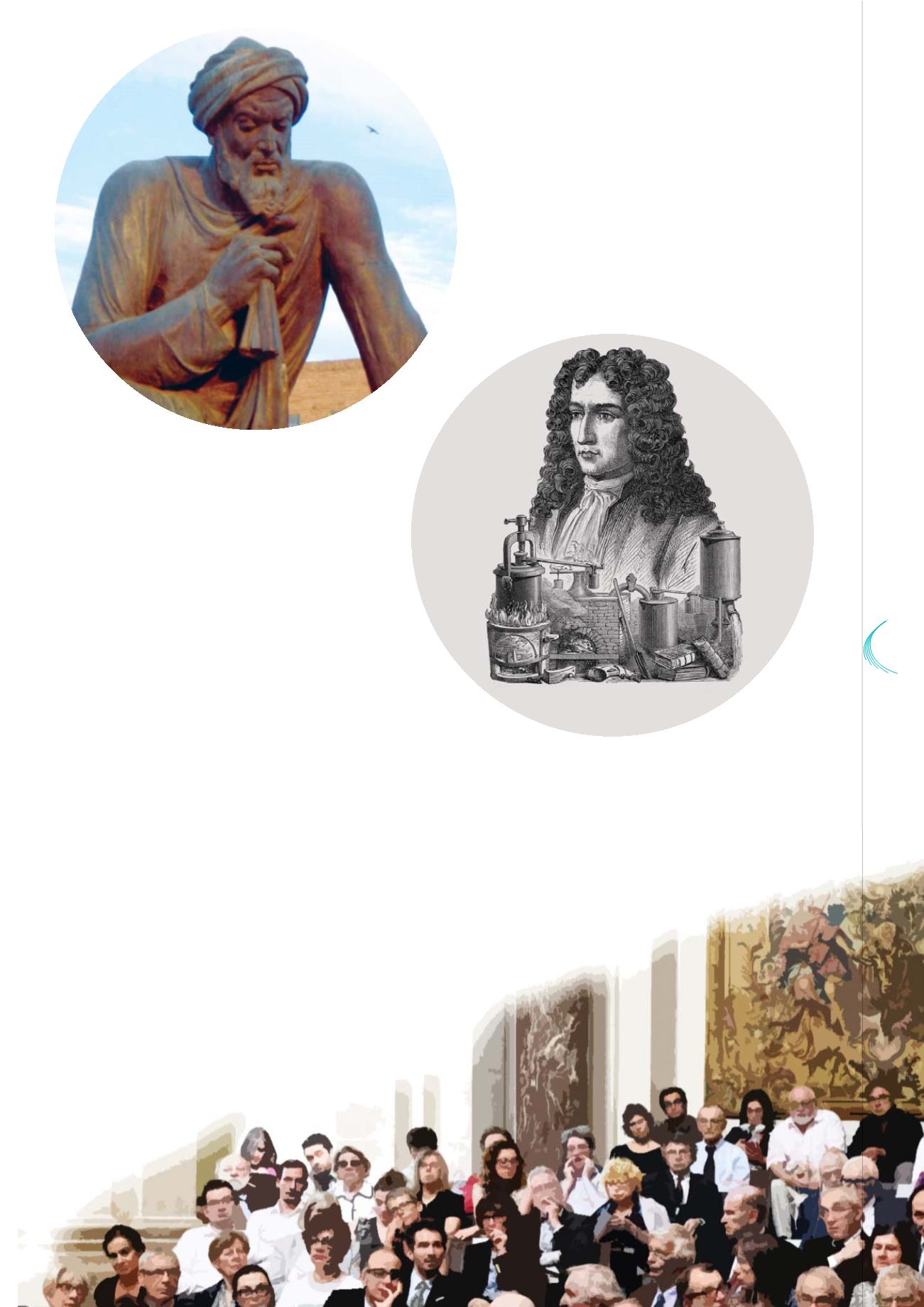

350
YEARS
OF
SCIENCE
73
Al Khwārizmī (c. 783- c. 850), at the origin
of the word algorithm
© Maurice Nivat
steam. D’Alembert published his
Traité de dynamique
in 1743, which
served as a basis for Lagrange’s
treatise,
Mécanique analytique
, in
1788. In 1765, Watt’s steam engine,
which was reliable because it was
adequately regulated, created the first
industrial revolution. Then, in 1824, Sadi
Carnot understood the conversion of heat in
mechanical energy and introduced the notion of
cycle of work production. His intuitions paved the
way for the second principle of thermodynamics and
the introduction of a fundamental notion: entropy.
Mechanics extended to deformable solids with
Caucher and Navier’s general theory of elasticity
in 1821. Poisson then studied the equilibrium of
elastic bodies, the behaviour of strained beams and
pressure vessels. The development of perfect fluid
Denis Papin (1647-1713) and his
digester (1679), an ancestor of the
pressure cooker
© The Print Collector - Alamy
Mechanical science evolution
Once the first connections between mechanics
and calculation were established by
Galileo and Descartes, Newton laid out the
fundamental principle or dynamics. Huygens
developed the pendulum clock and he and
Papin experimented on the driving force of
© From
B.
Eymann - Académie des sciences


















